CHURCHES, PALACES AND WORKS OF ART
Click on pictures to enlarge:
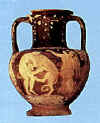 |
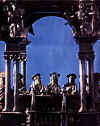 |
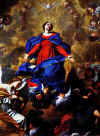 |
 |
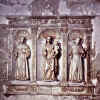 |
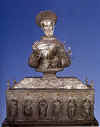 |
1
|
2
|
3
|
4
|
5
|
6
|
 |
 |
 |
 |
 |
 |
7
|
8
|
9
|
10
|
11
|
12
|
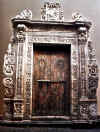 |
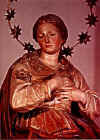 |
 |
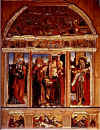 |
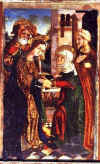 |
 |
13
|
14
|
15
|
16
|
17
|
18
|
 |
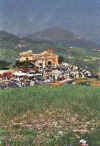 |
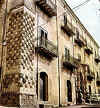 |
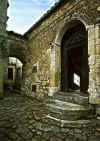 |
 |
|
19
|
20
|
21
|
22
|
23
|
|
Pictures' Description
1 - Greek amphora - Museo Comunale
|
13 - St. Jerome's Church
|
2 - Gagini's silver monstrance - Mother Church
|
14 - Statue of the Virgin - St. Jerome's Church
|
3 - Madonna and Angels - St. Gandolfo's Church
|
15 - Statue of Saint Vincent Ferreri (detail) - St. Jerome's Church
|
4 - Detail ( Madonna and Angels)
|
16 - Visitation (Triptych) - Mother Church
|
5 - Marble Triptych - Mother Church
|
17 - Detail of Visitation
|
6 - St. Gandolfo's silver sarcophagus - Mother Church
|
18 - Polizzi - "Ecumene Urbano", painting by
Ignazio Camilleri
|
7 - St. Gandolfo's marble sarcophagus - Mother Church
|
19 - Mother Church
|
8 - Choir (Church of Badiavecchia )
|
20 - St. Gandolfo's Hermitage
|
9 - Church of Commenda
|
21 - Gagliardo Palace
|
10 - Crucifix - Church of Carmine
|
22 - Courtyard
|
11 - Flemish Triptych (Mother Church)
|
23 - Polizzi- Town Profile
|
12 - "Magna Ecclesia", painting by Ignazio Camilleri
|
|
Santa Maria Maggiore.
Santa Maria Maggiore, the Mother Church, dates back to the period of Countess
Adelasia, and it has undergone several restorations, including a radical
restructure in 1690.
The original Norman style of the building is still visible in its narrow and
tall windows and in the ancient Portal which stands under the 16th century
Portico. Inside the church, over the main altar, there stands a statue of the
Virgin Mary, sculpted by Giuliano Mancino in 1508.
In the left nave of the church, you can see the Chapel of the famous
historian, Gian Battista Caruso, who was born in Polizzi. In that area,
also, there are an imposing reliquary from the 18th century and statues
attributed to Quattrocchi. In the right nave, you can admire San
Gandolfo’s
Chapel which contains a marble sarcophagus
of the saint by Domenico Gagini, (1482); the statues of Saints Peter and
James by Giorgio da Milano; and a marble triptych, representing the Virgin
Mary between Saint Francis and Saint Anthony, by Berrettaro and Francesco del
Maestro. These creations, inspired by Gagini’s art, are valuable for
their
design and pictorial expressiveness.
The most important painting in Santa Maria Maggiore is the Flemish Triptych
which hangs on the right side by the main altar. Experts have always
commented on the sweetness of its expression and the meticulous attention
given to details. This magnificent masterpiece, which accidentally ended up
in Polizzi, was attributed to
Van Der Weiden.
Across from it there is, also, a poliptych painted by Antonelli’s School. The
author is unknown, but the work is invaluable for its fusion of Antonelli’s
Flemish influence and the inspiration from Piero della Francesca’s art.
The Treasure of Santa Maria Maggiore consists of precious chalices, a
beautiful silver monstrance, designed by Nibilius Gagini, and Saint
Gandolfo’s silver sarcophagus, cast by the renowned jeweler, Andrea Di Leo,
and which dates back to 1549. Inside this church, visitors can also admire
a
remarkably artistic organ from the 17th century. Other paintings, by
unknown
authors, date back to the 17th and 18th centuries.
There are many other churches in Polizzi:
San Girolamo.
With its octagonal plan, this church is the work of the famous architect,
Brother Angelo Italia. Worthy of appreciation is the magnificent frieze which
decorates the main entrance.
Santa Maria delle Grazie.
It contains a sumptuous Baroque case on golden wood, by the talented artist
from Polizzi, Pietro Bencivinni (1697).
Santa Margherita.
This church is known for its artistic wrought iron railings, a painting of
Saint Benedict by Zoppo di Gangi, and statues by Gagini’s School.
San Francesco.
A 14th century church which has been restored with a modern look. It is no
longer a place of worship, but it is now used as a meeting hall.
San Gandolfo La Povera.
It houses a valuable painting by Zoppo di Gangi.
Il Carmine.
This church contains the Holy Crucifix, an exquisite work by Francesco
Gallusca, a pupil of Fra’ Umile da Petralia.
San Nicolo’ de Franchis.
A delightful and rustic little church. It dates back from 1167.
San Pancrazio.
Located in a panoramic site of the ancient Byzantine quarters, it contains
a painting by Zoppo di Gangi and one of Our Lady by an unknown artist.
These paintings have been recently restored by the Naftolia Association.
Sant’ Orsola.
This church, which dates back to 1386, contains a painting of the
Immaculate
Virgin Mary by Antonio da Conversano (17th century) and other paintings and
statues by Zoppo di Gangi and Quattrocchi.
Sant’ Antonio Abbate.
Originally this church was a Mosque. Its ancient Arabic architectural lines
are still visible in the present bell tower, the ancient Minaret.
Santa Maria Lo Piano.
This is the church where the Senate of Polizzi also met. Visitors
can see paintings by Zoppo di Gangi and interesting drawings, painted on
its
wooden vault, which depict little monsters and animals.
La Commenda.
On the south side of the town, at the outskirts, visitors can admire
the picturesque ruins of this ancient church no longer in use, which was once
connected with the Order of Jerusalem and the Knights of Malta.
|